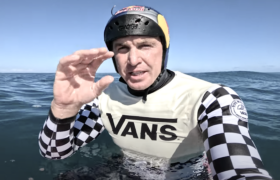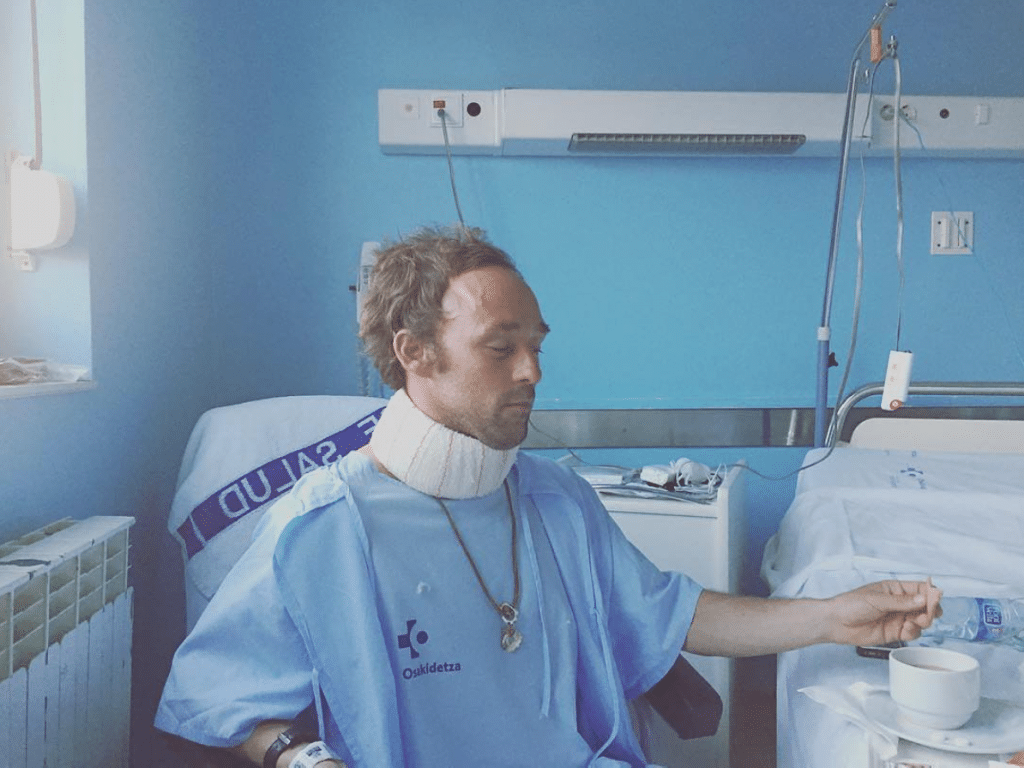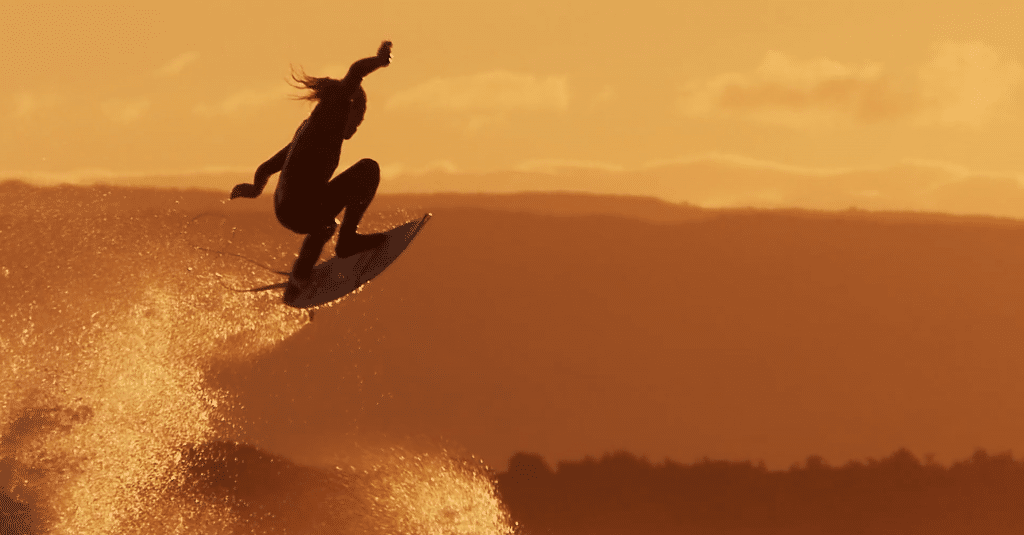Webber explains why his yet-to-be-built pool will change the game…
Love is an overbearing, and let it be said overrated, tyrant, although I hardly need to tell any reader this.
Greg Webber, the fifty-six-year-old Australian surfboard shaper and wavepool inventor, is currently disabled by bulging discs in his back, an affliction caused, he says, by the pain of a recent affair gone awry.
Webber offers a complex, and not altogether unconvincing, case for single-sex hierarchies in society and, in retrospect, we spend too long on love, lovers past and present, sexual jealousy, and not long enough on the matters of Kelly’s revival of his banana boards (he was supposed to shape one the day we interview) and his long-promised wavepool.
If you were to examine the scene of the interview via drone (so now), you’d be greeted on your remote screen with an L-shaped couch bound in a leather-look microfibre, Webber dominating the larger portion and the reporter laying sideways on the smaller leg, his phone recorder balanced on a cushion near Webber’s face.
Webber offers a complex, and not altogether unconvincing, case for single-sex hierarchies in society and, in retrospect, we spend too long on love, lovers past and present, sexual jealousy, and not long enough on the matters of Kelly’s revival of his banana boards (he was supposed to shape one the day we interview) and his long-promised wavepool.
On the wall next to the large television, an experimental five-foot-eight-inch long, fifteen-inch wide surfboard with no curve in the outline, though with a banana rocker and a floor-to-ceiling concave, steals the attention.
“I wanted to understand something about planshapes,” he says. “We’ve always had curved boards with curved planshapes. And that stops you from seeing what the core fundamentals are doing. That’s why I do stupid experiments.”
BeachGrit: You were supposed to shape for Kelly today. Tell me why the banana board attracts him so…
Webber: It’s what Kelly feels. It’s more than just a moment. He feels connected to the board from nose to tail. It sounds like a wank to say this but they’re possibly more advanced than what he is. If the best surfer in the world does a turn on a board and it comes underneath his feet with grip and keeps going around in the same direction he was heading but his weight is now over the top of the board, because he’s expecting that turn to be finished, but it’s not flattening off it’s still going, well, that’s a good thing. Because it means he’s got more to do! There’s more arc and tightness of turn available. The design is completely valid and the average surfer will find that out as well. Proof of that is Bob Hurley. He’s a good surfer, sure, but he adores the things! He’s got ten of ‘em now. So it’s ridiculous to say it’s only suited to the best surfer in the world.
Well, how do you ride one of the damn things?
Webber: Forward. Don’t stand on the tail. Stand in the middle. The fins are a bit further forward. You’re standing in the same place for your bottom turns as you are for most of your carve turns. You don’t need to move around, almost at all. If you get a board that has a really broad sweet spot but it has got all these other speed-bite-carve qualities, it means you can start to undersurf a bit and feel the wave differently. Thats what the banana is ideally surfed like. But guess what happens. People get on it and ride it what they’ve been riding a flatter rocker board. You’ve gotta forget about your manoeuvres and just get to know the board by feeling where it fits in the wave. It can ride higher. It can get to places you can’t normally.
Have you designed Kelly a surfboard for his wavepool?
Webber: The banana is exactly that. It’s for the wavepool, depending on whose wavepool. His waves look great but the ones we’ll be doing will be… better.
Has Kelly invited you to ride his pool?
Webber: Nope.
Have you asked him?
Webber: No. I don’t think I’d be allowed.
Do you talk about wavepools together?
Webber: We talked at some length on the Gold Coast. But there’s no way I can mention anything about it.
Why is your pool better?
Webber: Everyone’s gotta realise that there’s no point in being critical of what they’ve built there. If there are drawbacks, like a lot of whitewash and a lot of settling time, it’s irrelevant… But they know they can make a faultless wave. They’ve done the most important thing.
At this point, Webber explains, and does so very well, the difference between soliton-style wavepools (Wavegarden, Slater) and his Kelvin wake pool. In short, his will be better because it has a superior wave rate (a pool has to be commercial), a trough (“You don’t travel the world looking for flat-faced waves,” says Webber) and the ability for the wave to be… customised.
“If you can’t make ridiculous distortions it’s going to get boring. You just can’t provide an A, B and C model. Customising is critical. If you can make a wave go from half-a-metre to two-and-a-half metres in five seconds, that’s a ridiculous distortion. It doesn’t happen in nature. And if you can actually create bulges and lumps and backdoors that you can see coming in towards you, but you haven’t ridden that wave before, that degree of random is going accentuate the whole experience. Before my pool’s done no one will realise how vital it is to throw some shit at people so that you’re never aware of what’s going to happen next.”
Wavegarden, says Webber, will “end up being redundant. They’d be horrified at what Kelly did and and even more fucking horrified when I build my one. (But) only one is going to make money. My one. There’s only one design and it revolves around using the Kelvin wake. It allows us to do 500 waves an hour as a base rate. We can have a ride rate of 5000 rides per hour. That’s fucked up. That’s proper money. “
It’s also a lot of people squeezed into a pool.
“Well, you can do it. It’s a huge pool. Three hundred metres by nearly 200.”
To ride his pool, he says, will cost between three dollars for a three-footer to around ten dollars for a two metre wave with a 10-second cylindrical tube and not the conical tube he says characterises the Slater pool.
“And you’ll start off at one metre and the wave will build to two metres so guys who’ve never surfed tubes that big in their lives will be going, what the fuck?”
Webber says he’s going to skip the working prototype phase and go straight to the completed pool. “Probably in two years,” he says, although he admits he’s been saying “Probably two years” for longer than he’d like.
Webber says the whole process of trying to get his pool built has been “sickening.” All the revenue projections, the engineering reports, the patents.
“All of a sudden your brain is thinking stuff that has nothing to do with the shape of a barrel,” he says. “And that’s the sick bit. Having to change your thinking type and not lose the inspiration. Making this work, and making it work well, paying the shareholders back and well, will give me scope to do a number of other things. Like artificial reefs. Like generating power out of rivers without damning ‘em. Can you imagine how many ridiculous ideas I’ve got? If ten per cent are good, there’ll be at least ten of ‘em. And that will be a happy day.”
(Editor’s note: This story first appeared in an issue of The Surfer’s Journal.)







